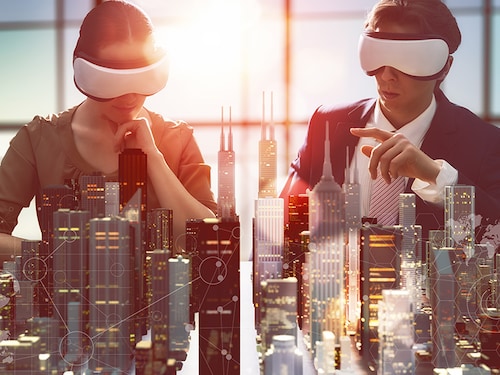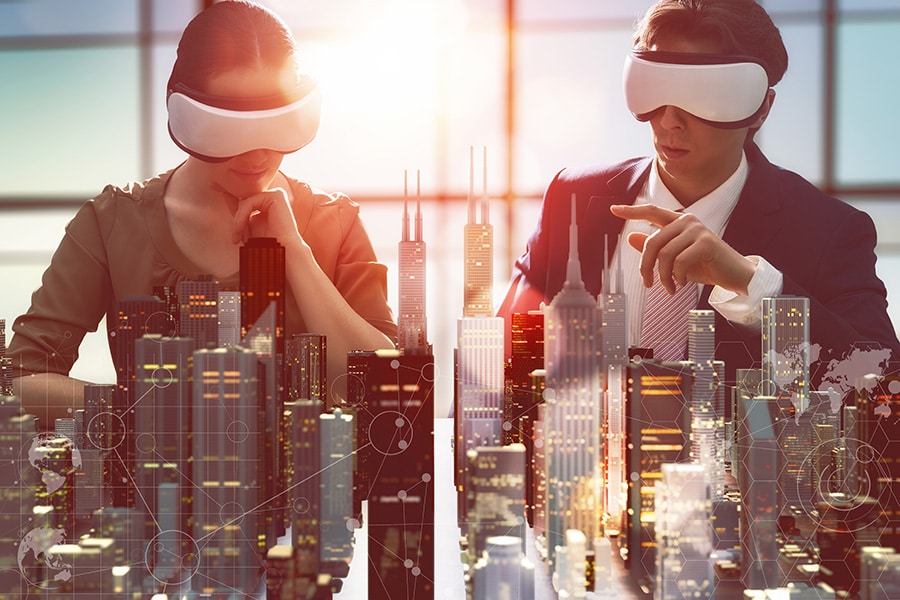From Learning To Earning — The Future Belongs To Robotics


The future looks more exciting than ever before. Machines are helping humans perform supernatural tasks and innovations have been paving the way for unique experiences. The fields of robotics, Virtual Reality (VR) and Augmented Reality (AR) have grown at a tremendous pace and have brought along with them a promise to transform the future.
Robotics, in its all-encompassing meaning, points towards any machine automating a manual human task. It started making inroads into our daily life at the beginning of the technological revolution, and today we stand surrounded by relics of the past. In future, the disconnected tele-operated robots will get a facelift by Artificial Intelligence (AI) and Machine Learning. Self-learning and completely automated systems which can analyse and take decisions are already being tested for various use cases. How this pans out on a large scale is still to be seen, but the initial findings have been very encouraging.
VR and AR have also been around for a long time now. But they started getting serious attention only recently, especially following the advancements in the areas of mobile devices, computing power and graphic abilities. They promise unique experiences and open up unlimited possibilities enhancing our lives in a million different ways. VR allows us to go anywhere, anytime, be with anyone in a real or imagined world. AR makes it possible to experience reality in an entirely different way. It can integrate real and virtual world to create mind-boggling, customised experiences.
VR and AR bring along with them new paradigms of how we interact with the world. Experiments are being conducted to create virtual experiences wherein the line between the real and virtual is blurring. The emphasis is on building seamless experiences. The potential for such VR and AR systems in all the walks of life is immense. Done properly, they can completely revolutionise travel, entertainment, education, medical, aeronautical, auto, construction and many other industries.
All industries can think of use cases requiring them to plug into a virtual world and use them for playing, learning and communicating. Pilots can train for probable scenarios, surgeons can hone their skills, construction companies can display virtual prototypes as well as enrich areas such as interior design, and education can become more fun and visual with virtual experiments. Imagine studying plants and animals by directly walking into their natural habitats and interacting with them or games allowing users to actually interact with the environment rather than just pressing buttons on a joystick. That’s the power of a well-designed VR- AR system.
However, there’s a fair amount of confusion about rapidly developing robotics and AI. A relatively large number of people think using machines will take a toll on the job market. The reality is very different though. There will be a displacement of employment. New skills will be required, and people will be able to move on from hard manual labour to more productive roles. These developments can lead to better working environments and increased efficiency levels.
The future looks promising with robotics, VR and AR leading the way with an aim to simplify and enrich our lives.
But transitions seldom happen without challenges.
For achieving any further success in the area of robotics, higher adaptability and integration of machine learning will be the key. The aim would be to offer clients a device equipped with cognitive abilities to make their life easy. VR and AR need much better immersion, cognition and connectivity to ensure a satisfying experience. Technology needs to undergo a quantum shift to build immersive virtual worlds which are not disconnected from reality. This will require superfast rendering of graphics, robust connectivity and advanced processing power.
The developments in the field of robotics, VR and AR have created unprecedented opportunities for everyone who has the vision to reshape how the future looks. Qualcomm dreams of powering all of this and more with a single processor powerhouse. It is uniquely positioned to provide a solid platform to future developers, offering them a chance to make their vision a reality.
Qualcomm's technologies shaped your mobile to be the graphic powerhouse it is today. Ultra-fast graphic processing, breathtaking speed and super-fast connectivity are the cornerstones on which Qualcomm aims to build the whole new world of robotics, VR and AR.
The mobile experiences of tomorrow will be shaped by technology that can adapt and give the desired processing and graphic abilities required by the applications. Qualcomm has built an All-in-One Snapdragon Platform. It allows the developers to create a smarter future with its AI integrations and neural processing engines. Safety has been taken care of by giving malware protection as one of the offerings. Better sound, immersive visuals and intuitive interactions make the Snapdragon platform a force to be reckoned with. In a world driven by immersive experiences, the Qualcomm Snapdragon Platforms aim to ensure that reality will never be the same.
To read more about how Qualcomm is rapidly reinventing the digital world with its innovative solutions, head over to its website .
First Published: Aug 18, 2017, 04:43
Subscribe Now